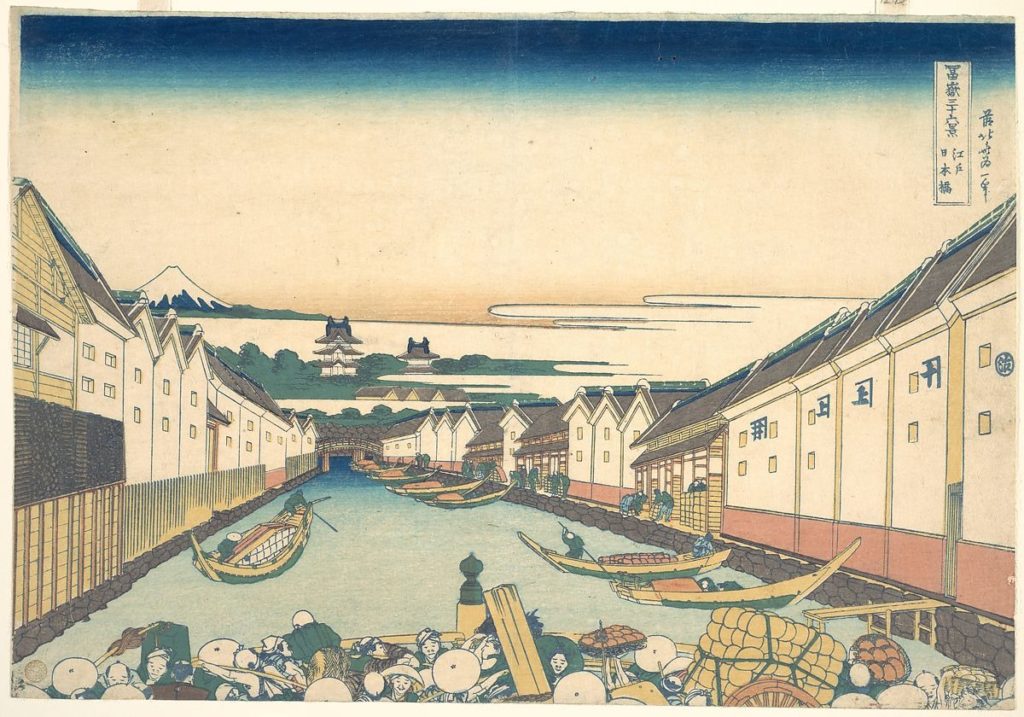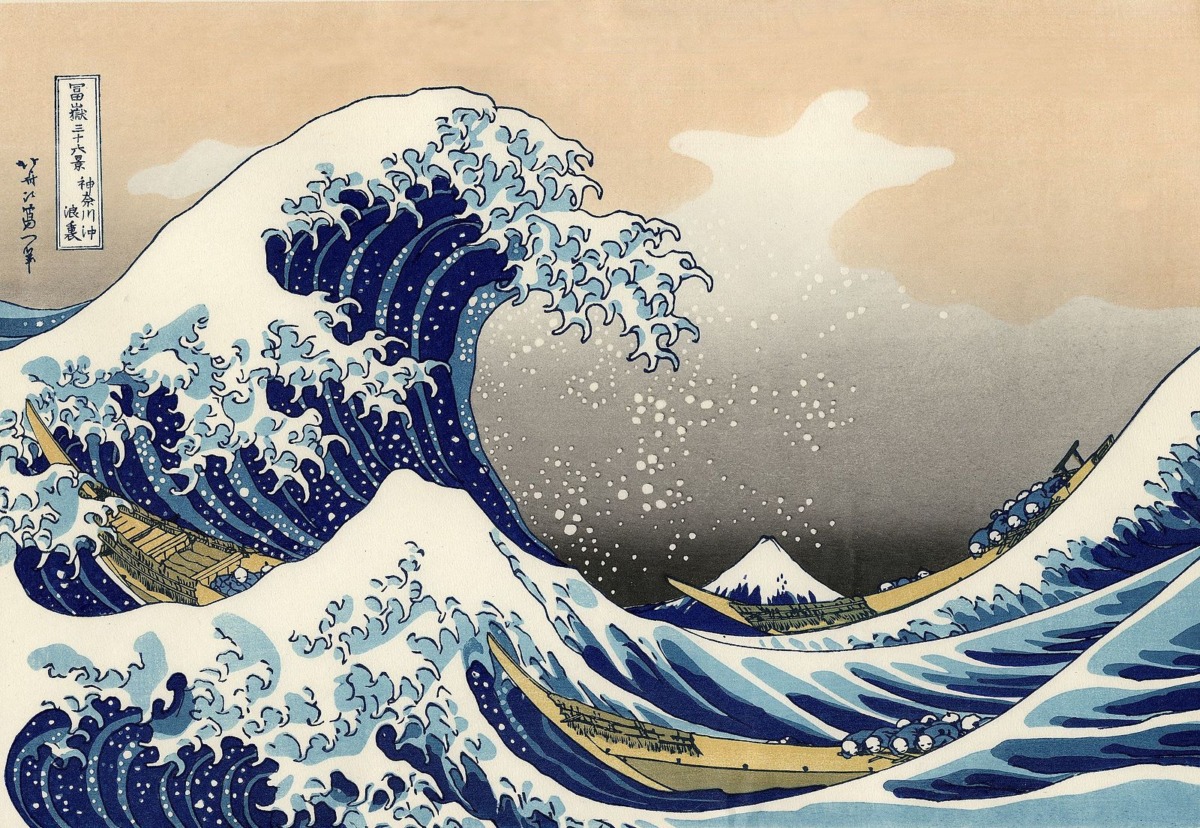Matt Doka, Reporter
@doka_matt
This probably isn’t your first time seeing the picture above. Most would say that it’s up there with the Mona Lisa and Starry Night because it is so universally recognized. Yet many people who know and love this print couldn’t tell you its name nor the piece’s history. Who is the artist depicting this bold landscape, and what is the meaning behind it?
The Great Wave off Kanagawa, also known as The Great Wave, is a woodblock print by Katsushika Hokusai. It is indisputably one of Japan’s (and the world’s) most revered pieces of art. A gargantuan wave dwarfs Mount Fuji and threatens to capsize the trio of boats venturing out to sea. The crest resembles a claw and is rather threatening. Meanwhile, the shape of the smaller wave below mirrors the silhouette of the distant Mount Fuji. The fishermen are at the mercy of the water that they are braving, illustrating the power and majesty of both the ocean and the mountain.
Katsushika Hokusai was one of the most prominent ukiyo-e artists in the country at the time. Ukiyo-e was Japan’s favorite type of art during the Edo period, which lasted from the early 1600s to the mid-1800s. Woodblock printing was the method used to create almost all ukiyo-e. Hokusai began his career as an artist at a very early age and continued both painting and printing for the remainder of his life. He went by at least thirty pseudonyms over the years, exceeding the number of names used by any other prominent artist in Japan. Hokusai coined the term ‘manga’ and was the artist behind some of its earliest developed forms.
One of Hokusai’s most famous creations was Thirty-six Views of Mount Fuji, a collection of woodblock-printed ukiyo-e that boasts The Great Wave in addition to forty-five other landscapes (he added ten more pieces after the initial thirty-six were released). Each piece depicts a different view of Japan’s highest peak. This one is the most famous by far, but many of the other prints within the collection are also notable, and all of them are worth exploring.

One of my personal favorites is Nihonbashi in Edo, a lesser-known print within the collection. Part of what makes this piece so interesting is the minimization of Mount Fuji, an approach similar to that of The Great Wave. In contrast, Nihonbashi in Edo doesn’t have a large, central feature that defines the landscape. Thirty-six Views of Mount Fuji is widely regarded as an incredible collection, but as demonstrated by this print, a singular piece can steal the show completely. The Great Wave is the hit single, whereas Nihonbashi in Edo is just another song on the album.
However, Red Fuji is another work by Hokusai that isn’t far behind The Great Wave in terms of fame. Unlike both, Red Fuji resembles the vast majority of the time’s Japanese nature prints: the sacred mountain as the sole feature. This was the norm for a while, which contributed to the success of The Great Wave as the unique design wasn’t something you saw in everyday Japanese art. Red Fuji is also commonly referred to as Fine Wind, Clear Morning: the piece’s formal title.
Woodblock printing is a technique similar to stamping a piece of paper but on a much larger, more detailed scale. The practice originated in East Asia and was considered by the Japanese to be the best method of creating texts and images until the mid-nineteenth century. This type of printing doesn’t have many steps, but don’t be fooled: it is a long and rigorous process. First, the artist sketches a design on paper. Next, the finished drawing is put over a smooth piece of wood and the artist traces the design, usually using oil to do so. The design is then etched into the wood, which can take days. Finally, ink is spread over the carved surface and the design is stamped onto the artist’s material of choice, whether it be paper, cloth, leather, or something else. Woodblock printing is not unique to The Great Wave, Katsushika Hokusai, or ukiyo-e and has been one of the defining features of Japanese and other East Asian art for well over one thousand years.
The Great Wave has been the inspiration for a plethora of artwork. Some believe that Van Gogh’s Starry Night is largely based on it. While the idea may seem far-fetched, if you look closely at the two paintings side by side, you might find the resemblance to be uncanny. For example, Hokusai’s wave dominates the piece similarly to how the swirls in the night sky of Starry Night look down upon the landscape of Saint-Rémy-de-Provence. Van Gogh once wrote a letter to his brother talking about Hokusai’s piece in which he said, “These waves are claws, the boat is caught in them, you can feel it.” He had last seen the print months earlier in a Parisian museum, meaning that he would have had a vivid memory of the piece. Alas, the debate continues between art historians.

In addition to having possibly been the inspiration for one of Van Gogh’s most renowned works, this piece has inspired a wave of digital art (pun intended), many of which are edited versions of the original designed to fit a certain ‘aesthetic’ look. This type of adaptational art is very popular on the internet and gives artists who take inspiration from extraordinary pieces like The Great Wave a chance to express themselves. This print’s influence has been and continues to be incredibly widespread within the art community across a variety of mediums.




